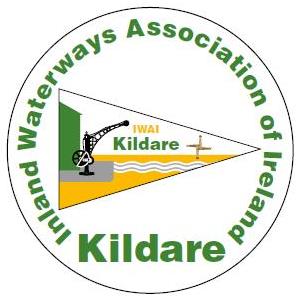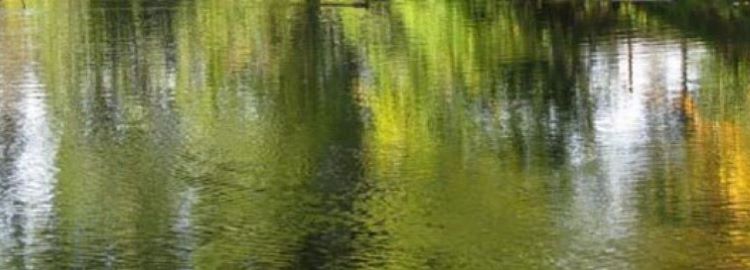Lowtown is the point where the Summit Level, Shannon Line and Barrow Line of the Grand Canal meet at Lock 19. It is the second stop on the Barrow Blueway.
Background
Lowtown is home to the old transhipment sheds, stables, workshops and boatyard built by the Grand Canal Company (GCC). These facilities have had many uses since first coming into operation as a commercial enterprise over 200 years ago.
In the early years of the Grand Canal, the commercial barges were privately owned and the GCC collected monies for tolls and tonnage. In 1849, when the laws were changed, the GCC expanded their business and started operating their own fleet. To speed up operations, from 1865, the original wooden barges were horse drawn from Dublin to Lowtown-Robertstown, then hauled by steam tugs from Lowtown to Ballycommon, and then horse drawn from Ballycommon to Shannon Harbour. Since the tugs hauled up to six barges at once, there was no advantage in speed where locks were close together; therefore, steam haulage was used only on the longer levels. In 1911, the GCC started to fit engines on some boats and from 1925 onwards, all new boats had engines installed.
The local Shipping Agents were responsible for accepting and despatching goods for consignment and for accepting cargo off the boats, transhipping them or arranging for their pick-up. The Agent was the overall representative of the GCC in the area, dealing with the public and with headquarters at St James Gate Dublin. Ref: Gerard D’Arcy, Portrait of the Grand Canal, first published in 1969]
With the end of commercial traffic in 1960 and the start of recreational boating on the canal, steel canal boats were built at Lowtown boatyard in the 1980s and 1990s, many of which are still on the Irish waterways. Lowtown was where many a canal enthusiast first spotted the boat of their dreams and if your dreamboat needed work, there was professional help, a chandlery, sheds, hard standing and a boatyard available for DIY work.
Today, sadly, the boatyard and chandlery no longer exist but boats still moor here and it is a popular place to stop for a while on ones journey around the system.
From its original transportation use to today’s recreational use, boat skippers have appreciated the assistance of lockkeepers in safely negotiating the locks on the canal.
Locking through Lowtown
There are 58 locks on the Grand Canal, some are doubles; the number of Lockkeepers assisting boats through the locks was 33 in 1969, 12 in 2015 and now zero in 2016.
James Conroy, until recently the Lockkeeper at Lowtown, is the fifth member of his family to hold the post in the last 145 years.
The Murphy-Conroy family’s long association with the Grand Canal began in the early 1800s when Murtagh Murphy (great-great grandfather to James) from Ballycowan near Tullamore, carried stone for building purposes in his barge along the Grand Canal. At that time, barges transporting cargo were built of wood, with straight sterns and were hauled by horses along the towpath.
His son, Murtagh Murphy Junior, (great grandfather to James) was born in 1849 and in time worked with his father on the barge. He met and married Mary Connor from Robertstown in Allen Church, which is built using stone shipped from Tullamore. Murtagh Junior became the Lockkeeper at Lowtown in 1871. He and Mary had five children.
- Murtagh was a Storeman in the Transhipment Yard in Lowtown. His daughter would later marry Michael Donoghue the Lockkeeper in Ballycommon.
- Mary married Dan Cronly and their descendants, John and his son Trevor, currently work for Waterways Ireland.
- Richard became Lockkeeper in Ballyteague
- Esther married Patrick Fitzgerald and emigrated to Scotland
- Thomas (Senior) carried on the tradition and became Lockkeeper at Lowtown when his father died.
Thomas Senior (grandfather to James) and his second wife Mary Ann Mulhall had four children.
- Ellen married and lives locally
- Thomas Junior (uncle to James) became Lockkeeper when his father died in 1939.
- Murtagh emigrated to London where he worked for most of his life in the Victoria and Albert museum.
- Esther (mother to James) married John Conroy. John was a boatman on the trading barges until the end of commercial traffic in 1960.
Esther became Lockkeeper in 1970, when her brother Thomas died, until she was forced to retire due to ill health in 1983.
James Conroy became Lockkeeper in 1983 and held the post for thirty-three years until the demise of Lockkeepers on the Grand Canal in 2016.
Kildare IWAI thanks James Conroy for his input to this piece and permission to use photographs from the Conroy Collection.




















